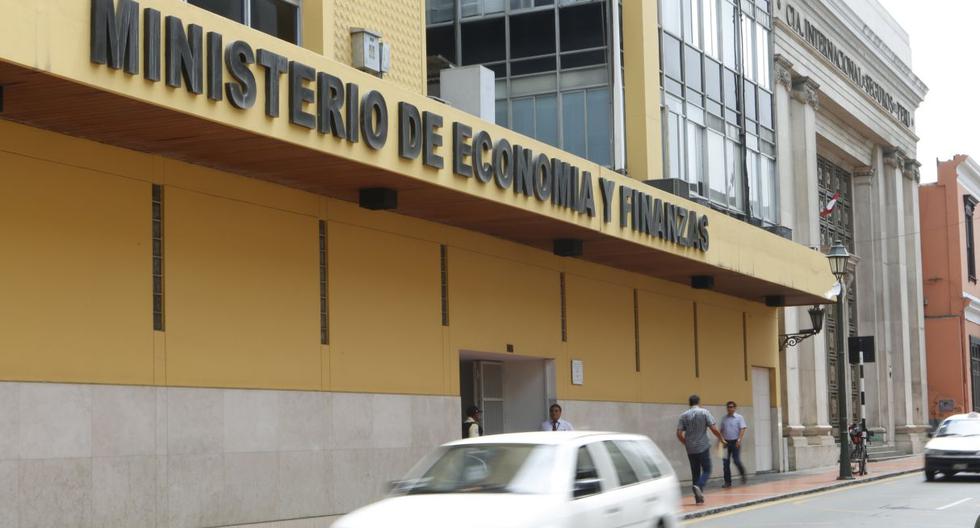The Tax Council (CF) warned about the main biases contained in the projections in the Multiannual Macroeconomic Framework 2023-2026 (MMM), which was published on August 25.
In addition, he warned about the main risk factors that can affect the trajectory of public finances.
Regarding local economic activity, the CF considered that the MMM projections have an optimistic bias for multiple reasons:
Short term
In the short term, mainly in 2023, this optimism is explained because the MMM would be underestimating the negative impact of external shocks on the domestic economy.
In addition, the real effects of the persistence of the deterioration of economic expectations as a result of political instability, social conflicts and labor measures that will have a negative impact on private investment are not being assessed.
He also specified that the effect of the increase in inflation on private spending would not be considered, and the effect of the entry of new subnational authorities, which normally slows down public investment even more, would be underestimated.
Medium term
In the medium term, the Fiscal Council maintained that reaching economic growth figures above 3% will constitute the greatest challenge in economic matters as a result of the consequences that the pandemic would have left on potential growth (which the MEF calculates around 3% ) and the aforementioned challenges to give a new boost to private investment.
Regarding the forecasts of the MMM on the prices of raw materials, he maintained that the downward revisions of the prices of copper and gold for the short term are reasonable.
However, in the medium term, these prices will remain at historically high and favorable levels in macrofiscal terms. In that sense, given the context of high volatility and multiple macroeconomic risks, he suggested taking a more cautious stance in the face of the possibility of a price correction greater than that forecast in the MMM.
Public debt
In terms of projections on gross public debt. which have been revised downwards in the MMM, the CF warned that this result should be taken with caution since it is mainly explained by the effect of higher inflation.
“The CF warns that gross indebtedness maintains a greater exposure to foreign exchange risk, and that net indebtedness would remain at persistently high levels. The CF considers that this reflects the deterioration of public finances and the pending challenge to recompose the level of precautionary assets, such as those of the FEF, which allow facing future crises”, he added.
Tax perspective
Regarding the fiscal perspectives, the CF expressed the opinion that the greatest risk for the expected fiscal deficit and public debt paths comes from the presence of great pressure to increase public spending derived from approved regulations and offers without fiscal support, promoted both by the Legislative Power as well as by the Executive Branch.
In addition, he underlined that optimism about the macroeconomic assumptions contained in the MMM would lead to overestimating tax revenues, pushing towards higher levels of fiscal deficit and public debt. The materialization of these risks would undermine the credibility of the commitment to maintain fiscal stability, an element that must be recomposed as a priority.
“The aforementioned risks are particularly relevant since the fiscal projections of the MMM forecast fiscal deficit levels that coincide with the ceilings of the corresponding fiscal rule, for which any deviation in revenues would imply the need for an unlikely spending restriction, or of an undesirable breach of the fiscal rule”, he referred.
In this sense, the CF pointed out that, in a post-pandemic context, the main task in terms of fiscal policy will be to rebuild the lost fiscal strengths, mainly the precautionary savings of the Fiscal Stabilization Fund, and maintain the commitment to fiscal responsibility and credibility to manage the aforementioned risks.
“This requires guaranteeing a higher level of permanent tax revenue and improving the efficiency of spending, within a framework of higher rates of economic growth that is sustained by the development of private investment.“, he claimed.
In addition, he mentioned that the main fiscal risks facing Peruvian public finances come from a revenue trajectory lower than that contemplated in the MMM and from a level of spending higher than its level prior to the health emergency.
Faced with these risks, the CF reiterated the need to ensure the reduction of the fiscal deficit through specific measures that guarantee the generation of permanent income and the control of public spending.
“To this is added a context of higher interest rates, either due to external conditions or the deterioration of country risk, which increase the weight of financial spending on the fiscal deficit and, therefore, the consolidation effort consistent with sustainability. fiscal”, he narrowed down.








